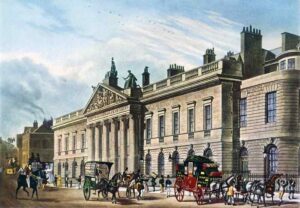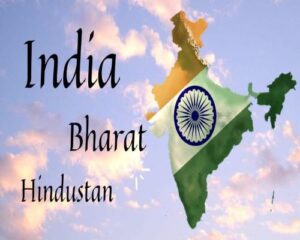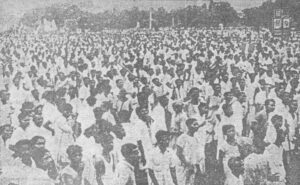Blue dye used in textiles in the 18th and 19th centuries was produced from a plant called indigo. India was the top supplier of indigo in the world in the nineteenth century. Thousands of peasants died in the process of cultivating this color. Peasants in Bengal were tortured, beaten, kidnapped, raped, flogged, and killed to feed the imperial appetite for indigo dye. In 1859, Bengal’s peasants refused to cultivate indigo and revolted against the indigo planters.
The Indigo revolt(or Nil bidroha) was the most significant peasants uprising. The mighty British who conquered Bengal were forced to yield to the demands of indigo farmers.
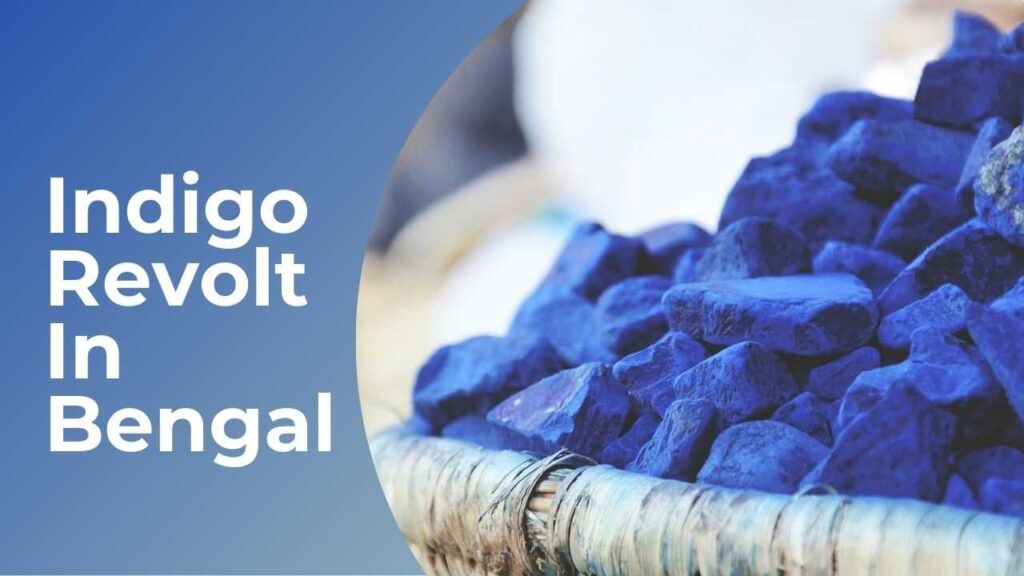
What is indigo cultivation?
The indigo plant grows primarily in the tropics. Indigo was a global trade item. People all over the world were engaged in indigo business. Imperial powers were vying for control of the world indigo market.
How did indigo plantation start in India?
In India, indigo was cultivated from prehistoric times, and small quantities were exported to Europe.
Indigo cultivation in Bengal dates back to 1777 when Frenchman Louis Bonnaud introduced it to the Indians. He was Bengal’s first indigo planter. He began farming at Taldanga and Goalpara, both near Chandannagar (Hooghly). It was later introduced in large parts of Bankura, Birbhum, Burdwan, North 24 Parganas, and Jessore (present Bangladesh).
In the thirteenth century, European manufacturers used Indian indigo to dye cloth. However, only small amounts of Indian indigo reached the European market, and its price was exorbitant.

As a result, European cloth manufacturers had to rely on another plant known as woad to produce violet and blue dyes. In Europe, woad was more widely available. It was grown in northern Italy, southern France, parts of Germany, and the United Kingdom.
Worried about indigo competition, European woad producers lobbied their governments to prohibit indigo imports. Cloth dyers, on the other hand, preferred indigo as a dye. Indigo dye produced a deep blue color, whereas woad dye was pale and dull.
By the seventeenth century, European cloth manufacturers had persuaded their governments to lift the ban on indigo imports. Indigo plantations have also sprouted up in various parts of Africa and North America.
By the end of the eighteenth century, Britain had begun to industrialize, and its cotton production had expanded, resulting in a massive new demand for cloth dyes.
While indigo demand grew, existing supplies from the West Indies and America dried up for various reasons. In 1791, the African slaves who worked on the plantations revolted, torching the plantations and killing their wealthy planters. In 1792, slavery was abolished in France’s colonies. These events resulted in the demise of indigo plantations on the Caribbean islands.
Between 1783 and 1789, the world’s indigo production fell by half. Cloth dyers in Britain were desperate for new sources of indigo.
Because of Bengal’s favorable climate and low labor costs, Britain turned to India to meet Europe’s rising demand for indigo. The East India Company extended the area under indigo cultivation in India. Bengal expanded rapidly, and Bengal indigo came to dominate the global market.
Only about 30% of the indigo imported into Britain in 1788 came from India. By 1810, the proportion had risen to 95%.
As the indigo trade expanded, the Company’s commercial agents and officials began investing in indigo production. Many Company officials left their jobs to focus on their indigo business. Many Scots and Englishmen came to India to become planters, attracted by the prospect of large profits.
With the assistance of the East India Company, indigo enterprises in Bengal grew from a few companies to around 500 factories in 1830.
India became the world’s largest supplier of indigo in the nineteenth century.
Reason for indigo revolt in Bengal
Understanding the indigo production system is vital to understanding the indigo rebellion. There were two indigo cultivation systems: Nij (own) and Ryoti (tenant). Planters in the nij system used waged labor to produce their indigo. They had to invest in bullocks, ploughs, land, seed, processing, production, cutting the plants, fertilizers, and overall maintenance under the nij system. Furthermore, planters had to take the risk of production loss due to bad weather. It was difficult for them to expand the area under nij cultivation.
In the Ryoti (tenant) system, the planters make a contract with the peasants. In this system, they gave some advance money and indigo seeds to peasants. The peasants had to cultivate indigo on their lands, with their family labor and bullocks, till the land, sow the seed, weed clearing, irrigation, harvest it, and finally transport it to the factory. Moreover, all the risks and labor were on peasants. So, if the harvest was lost in a lean year, the peasant had to pay and retake a loan from the planters. As a result, he fell into the debt trap of the planters.
As aforementioned in the ryoti system of indigo cultivation, the peasant entered into a contract with the planters. Planters provided loans at very high interest. Once the peasant entered the contract, there was no easy escape from the agreement. Sometimes planters pressured the peasant to take the advance. The price they received for the indigo they produced was low, and the loan cycle never ended. Even if the peasant wanted to repay the money, the planters refused.
The entire indigo production system rested based on oppression and intimidation.
Furthermore, because indigo cultivation was unprofitable for the peasants, no ryots would willingly accept such personal loss. The planters coerced the ryots into signing a contract or an agreement. Peasants who were initially enticed by the loans quickly discovered how harsh the system was. The system’s violence was so severe that peasants were forced to flee their villages.
There were other issues as well. The price paid by the planters was meagre. The farmers were completely unprotected from the indigo planters, who threatened them with mortgages or property destruction if they refused to obey them.
Where did the indigo revolt start?
In 1859, Bishnucharan Biswas and Digambar Biswas led the first indigo revolt against the planters in Gobindapur and Chaugacha village in Krishnanagar, Nadia district. It quickly spread through Murshidabad, Birbhum, Burdwan, Pabna, Khulna, and Narail.
Nadia’s Biswas brothers, Pabna’s Kader Molla, and Malda’s Rafique Mondal were famous leaders of the revolt.
Why did the indigo revolt happen?
Before indigo plantations, peasants had the right to choose what to cultivate in their lands, but this freedom was taken away during the indigo plantation. Indigo planters forced peasants to plant indigo rather than food crops. If peasants were denied, planters used coercive methods to compel the farmers to grow indigo.
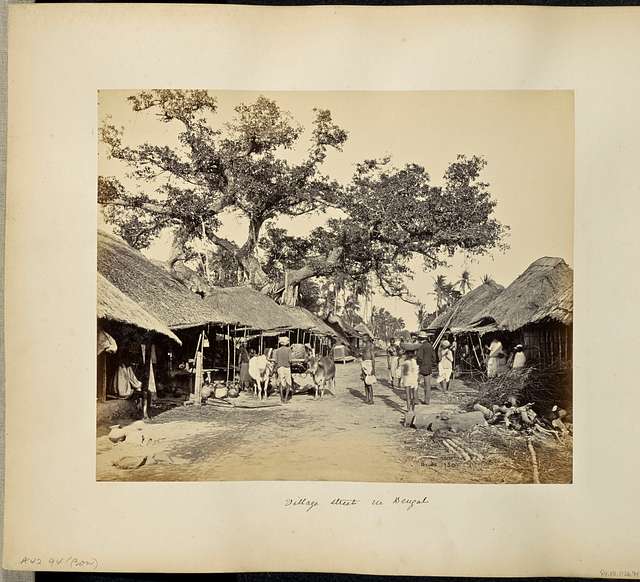
Indigo could only be grown on fertile land. Furthermore, labor was required at a time when peasants were typically engaged in rice cultivation. The planters insisted that indigo be grown on the best soils, which peasants preferred for rice cultivation. Supplies were also hard to obtain from the peasants because their ploughs and bullocks were busy working in the rice fields.
Indigo, on the other hand, had deep roots that quickly depleted the soil. The land could not be sown with rice after an indigo harvest.
Peasants lost a lot of money because it was not beneficial or profitable. It was time-consuming. Furthermore, peasant food security was jeopardized by the cultivation of indigo. The famine and deaths of millions demonstrated that the conditions of villages were already deplorable. Peasants were forced to work as slaves on an indigo plantation.
The planters benefited from government policies that favored them. European planters were never punished for their heinous actions.
The peasants revolted as a result of land policy, labor exploitation, and the production system’s coercive methods.
From 1850-1857, the Santal rebellion took place near the indigo districts. The indigenous Santal group revolted against the oppression of the British, local money lenders and zamindars, and later indigo planters. This incident stirred the minds of the peasants of Bengal. Also, In addition, the 1857 Sepoy mutiny influenced the peasants’ minds. Bengal’s political situation could be described as tense. The colonial raj dissatisfied peasant societies. They fought tenaciously for a dignified life, laying the groundwork for India’s independence movement.
Indigo revolt in Bengal
In March 1859, thousands of peasants in Bengal refused to grow indigo. As the rebellion spread, ryots refused to pay rents and attacked indigo factories armed with swords and spears, bows and arrows, and other weapons. Women showed up to brawl with pots, pans, and kitchen utensils. Those who worked for the planters were socially boycotted, and gomasthas (planters’ agents) who came to collect rent were beaten. Ryots vowed they would no longer accept advances to sow indigo or be bullied by the planters’ lathiyals(lathi-wielding strongmen).
A public trial was held for some indigo planters, and they were executed. The indigo depots were burned down. Many planters fled to avoid being apprehended.
The local Zamindars were against the planters and were aligned with peasants’ interests because of their personal interests. The zamindars were unhappy with their increasing power and influence and angry at being forced by them to give their land on long leases.
The indigo peasants also expected the British government to back them up in their fight against the planters. Following the Revolt of 1857, the British government was especially concerned about the possibility of another popular uprising.
In the winter of 1859, when word spread of a simmering revolt in the indigo districts, the Lieutenant Governor toured the region. The ryots interpreted the tour as government sympathy for their plight.
When the magistrate Ashley Eden issued a notice in Barasat declaring that ryots would not be forced to accept indigo contracts, word spread that Queen Victoria had declared that indigo did not need to be sown. Eden was attempting to appease the peasants and maintain control of an explosive situation, but his actions were misinterpreted as support for the rebellion.
During the indigo revolt, who was the governor of Bengal?
At the time of the Indigo revolt, J P Grant, Lieutenant Governor-general of Bengal. Charles Canning served as the Governor-general of India from 1856 – 1862.
Effects of indigo revolt
Missionaries, government officials, Bengali merchants, intelligentsia, and local zamindars all supported the indigo revolt.
As the rebellion spread, Calcutta intellectuals flocked to the indigo districts. They wrote about the ryots’ misery, the planters’ tyranny, and the horrors of the indigo system. The Bengali middle class wholeheartedly supported the peasants.
Nil Darpan, a play written by Dinabandhu Mitra in 1860, is based on the indigo revolt. The drama depicts the poor living conditions of the peasants as well as the violence of the indigo planters. Rev. James Long published it after Michael Madhusudan Dutta translated it into English. It drew a lot of attention in England, where people were stunned by the savagery of their countrymen. The play sparked massive controversy and was later banned by the East India Company put a ban on it to control the agitation among the Indians.
Worried by the rebellion, the government brought in the military to protect the planters from assault, and set up the Indigo Commission in 1860 to enquire into the system of indigo production. E. W. L. Tower noted in the commission report that “not a chest of Indigo arrived in England without being stained with human blood.”
The Commission found the planters guilty and chastised them for using coercive methods with indigo cultivators. It declared that ryots could not profit from indigo production. The Commission requested that the ryots fulfill their existing contracts while also stating that they could refuse to produce indigo in the future.
According to historian Jogesh Chandra Bagal, the revolt was a nonviolent revolution that is why the Indigo Revolt was more successful than the Sepoy Revolt. In his book, History of Bengal, R.C. Majumdar goes so far as to call it a forerunner of Gandhi’s nonviolent passive resistance.
After the revolt, indigo production collapsed in Bengal. However, the planters have now relocated their operations to Bihar. The discovery of synthetic dyes in the late nineteenth century severely affected the indigo dye business. But, yet they managed to expand production.
When Mahatma Gandhi returned from South Africa, a peasant from Bihar persuaded him to visit Champaran and see the plight of the indigo cultivators there. The arrival of Mahatma Gandhi in Champaran in 1917 signaled the start of the Champaran movement against indigo planters.
The Indigo revolt was the most significant peasants uprising. The indigo rebellion shows the power and organization capacity of the peasants. The indigo revolt was so intense that the British colonial regime felt it would lose its grip on Bengal.


